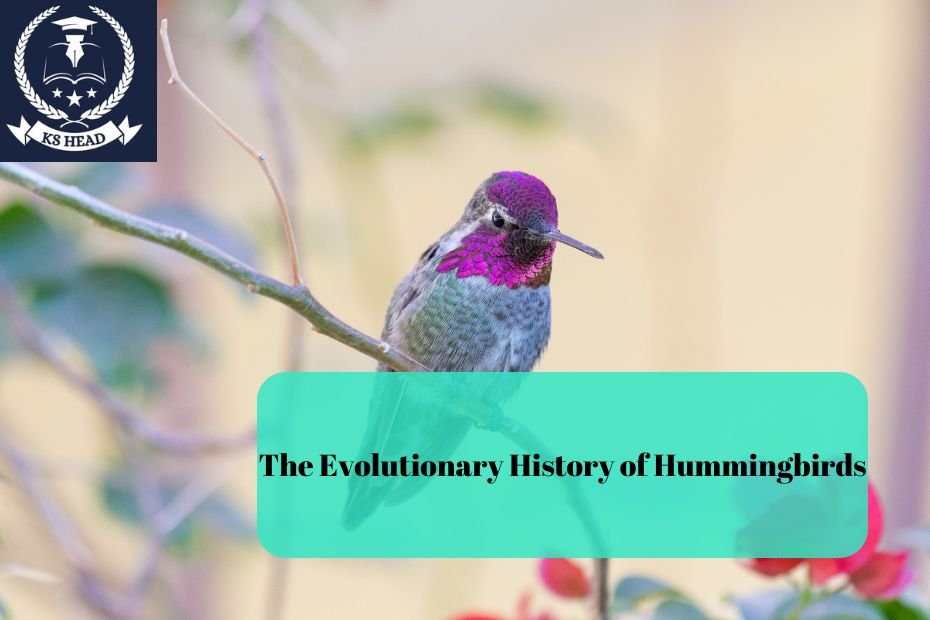Hummingbirds are among the most unique and fascinating birds in the world, known for their vibrant colors, incredible flying abilities, and specialized feeding habits. Understanding their evolutionary history provides insight into how these remarkable creatures adapted to their environments and how they became such integral components of ecosystems. This article explores the evolutionary origins of hummingbirds, their adaptive traits, and the ecological roles they play today.
Overview of Hummingbirds
Hummingbirds belong to the family Trochilidae and are primarily found in the Americas, from Alaska to Tierra del Fuego. There are over 300 species of hummingbirds, varying significantly in size, color, and behavior. These birds are most recognized for their unique hovering capabilities, rapid wingbeats, and specialized feeding habits that allow them to extract nectar from flowers.
Unique Characteristics
Hummingbirds are distinguished by several notable features:
- Size: They are the smallest birds in the world, with some species, like the bee hummingbird, measuring just 2.2 inches in length.
- Flight: Hummingbirds are the only birds capable of true hovering. Their wings can beat at a rate of 50 to 80 times per second, allowing them to maneuver deftly in the air.
- Metabolism: They have one of the highest metabolic rates among vertebrates, which supports their energetic lifestyle and rapid wingbeats.
- Coloration: Their iridescent feathers are a result of microscopic structures that refract light, creating stunning colors.
Evolutionary Origins
The Ancestors of Hummingbirds
The evolutionary history of hummingbirds can be traced back to ancient avian ancestors. To understand their origins, we need to examine several key points in their evolutionary journey.
- Origin of Birds: Birds are believed to have evolved from theropod dinosaurs during the Late Jurassic period, approximately 150 million years ago. This evolutionary transition involved adaptations for flight, including the development of feathers, lightweight bones, and specialized respiratory systems.
- Early Diversification: The early ancestors of hummingbirds belonged to a group of small, insectivorous birds that thrived in forested environments. These birds exhibited traits that would later evolve into those seen in modern hummingbirds.
- Emergence of Hummingbirds: Hummingbirds are thought to have emerged around 22 million years ago during the Miocene epoch. Fossil evidence suggests that they evolved from a lineage of small birds similar to today’s sunbirds, which are found in Africa and Asia.
Genetic Evidence
Recent advances in genetic research have shed light on the evolutionary relationships among hummingbird species. DNA analyses indicate that hummingbirds are closely related to a group of birds called the “trochilids,” which include the sunbirds and flowerpiercers. Molecular data suggest that hummingbirds diverged from these relatives around 20 million years ago.
Adaptive Traits and Evolution
Feeding Adaptations
One of the most significant factors influencing the evolution of hummingbirds is their specialized feeding behavior. Hummingbirds primarily feed on nectar from flowers, which requires a range of adaptations:
- Long, Specialized Beaks: Many species have developed long, slender beaks that allow them to reach deep into flowers for nectar. The length and shape of the beak often correspond to the types of flowers they pollinate.
- Extensible Tongues: Hummingbirds have long, forked tongues that can extend to extract nectar. Their tongues can rapidly flick in and out, allowing them to lap up nectar efficiently.
- Vision: Hummingbirds have excellent color vision, enabling them to identify nectar-rich flowers. They are particularly attracted to bright colors, especially red and orange, which signal abundant food sources.
Wing Structure and Flight
The remarkable flight capabilities of hummingbirds have also evolved in response to their ecological niche:
- Wing Structure: Hummingbirds possess a unique ball-and-socket joint at the shoulder, allowing for a greater range of motion in their wings. This adaptation enables them to fly forwards, backwards, and even hover in place.
- Muscle Development: The breast muscles of hummingbirds are highly developed, constituting about 30% of their body weight. This muscular structure allows for the rapid wingbeats necessary for hovering and agile flight.
- Metabolic Rate: Hummingbirds have evolved an exceptionally high metabolic rate, which is critical for supporting their energy-intensive lifestyle. They can consume up to twice their body weight in nectar each day, and their hearts can beat over 1,200 times per minute during flight.
Camouflage and Nesting Behavior
Hummingbirds have also developed adaptations related to nesting and camouflage:
- Nesting Strategies: Female hummingbirds construct small, cup-shaped nests using plant materials, feathers, and spider silk. The nests are often camouflaged with lichen or moss, providing protection from predators.
- Behavioral Adaptations: Many hummingbird species engage in territorial behaviors, defending their feeding territories against intruders. Males perform elaborate courtship displays to attract females, showcasing their vibrant plumage and aerial acrobatics.
Ecological Roles
Hummingbirds play essential roles in ecosystems as pollinators. Their specialized feeding habits and adaptations make them critical for the reproduction of many flowering plants.
Pollination
Hummingbirds are among the primary pollinators for various plant species, especially those with tubular flowers. When they visit flowers to feed on nectar, their heads come into contact with the reproductive structures of the plants, transferring pollen from one flower to another. This process facilitates plant reproduction and contributes to the biodiversity of ecosystems.
Seed Dispersal
In addition to pollination, hummingbirds also contribute to seed dispersal. Some plant species rely on hummingbirds to disperse their seeds over short distances, promoting plant diversity and growth.
Food Source for Other Species
Hummingbirds are also part of the food web, serving as prey for larger birds, reptiles, and mammals. Their presence supports the ecological balance and biodiversity of their habitats.
Conservation Status
Despite their ecological importance, hummingbird populations face numerous threats. Habitat loss due to urbanization, deforestation, and climate change are significant concerns for these delicate birds. Additionally, the use of pesticides and pollution can harm their food sources and nesting habitats.
Conservation Efforts
Several conservation efforts are underway to protect hummingbird populations and their habitats:
- Habitat Preservation: Protecting natural habitats and promoting sustainable land use practices can help preserve the ecosystems hummingbirds depend on.
- Pollinator Gardens: Encouraging the planting of native flowers and pollinator gardens can provide essential food sources for hummingbirds and other pollinators.
- Education and Awareness: Raising awareness about the importance of hummingbirds and their roles in ecosystems can foster conservation efforts among communities.
Conclusion
The evolutionary history of hummingbirds is a testament to the intricate adaptations and evolutionary processes that have shaped these remarkable birds. From their origins as small, insectivorous ancestors to their present-day specialized feeding behaviors and ecological roles, hummingbirds exemplify the wonders of evolution. Understanding their history is crucial for promoting conservation efforts and ensuring the survival of these captivating creatures for future generations.
FAQs
1. How did hummingbirds evolve?
Hummingbirds evolved from a lineage of small, insectivorous birds around 22 million years ago during the Miocene epoch.
2. What adaptations allow hummingbirds to hover?
Hummingbirds have a unique ball-and-socket joint at the shoulder, allowing for a greater range of motion in their wings, combined with powerful breast muscles that support rapid wingbeats.
3. Why are hummingbirds important for ecosystems?
Hummingbirds are critical pollinators for many flowering plants and contribute to seed dispersal, promoting biodiversity in ecosystems.
4. What threats do hummingbirds face today?
Hummingbirds face threats such as habitat loss, climate change, and pesticide use, which can impact their food sources and nesting habitats.
5. How can I attract hummingbirds to my garden?
To attract hummingbirds, plant native flowering plants, provide sugar-water feeders, and create a clean and safe environment with minimal pesticide use.

